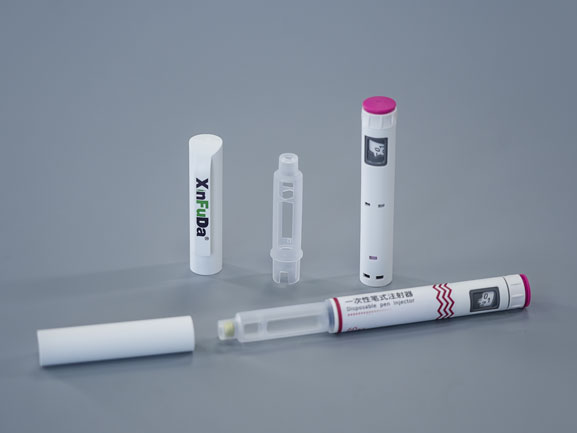INTRODUCTION
The most prominent manifestation of insulin activity, an abrupt decrease in blood glucose, was the basis for biologic assay from the time of its first clinical use. The bioassay, although relatively cumbersome, has the great merit of accurately reflecting the effect on the diabetic patient. The advent of practical yet sophisticated physicochemical methods (e.g., liquid chromatography) to measure insulin potency quantitatively has resulted in a more accurate and precise compendial test for insulin and insulin products. However, the bioidentity of insulin and insulin products cannot be assessed by these methods. Thus, a bioidentity test is called for in the appropriate monographs.
Two options are provided: The Rabbit Blood Sugar Method—Quantitative can be used for any compendial insulin or insulin analog. The In Vitro Cell-Based Bioidentity Test ▲for Insulin Glargine and Insulin Lispro▲ (USP 1-Feb-2026) can be used for insulin glargine and insulin lispro▲, and the In Vitro Cell-Based Bioidentity Test for Insulin Human and Insulin Aspart can be used for insulin human and insulin aspart.▲ (USP 1-Feb-2026) The Rabbit Blood Sugar Method—Quantitative is used to determine the potency of Insulin Reference Standards, for the validation of the stability of new insulin preparations, and to determine the specific activities of insulin analogs.
Change to read:
ASSAY
•Rabbit Blood Sugar Method—Quantitative
Diluent:Prepare an aqueous solution containing 0.1%–0.25% (w/v) of either cresol or phenol, 1.4%–1.8% (w/v) of glycerin, and sufficient hydrochloric acid to produce a pH between 2.5 and 3.5, unless otherwise directed in the individual monograph.
Standard stock solution:Prepare a solution containing 40 USP Insulin Units/mL of the USP Insulin Reference Standard of the appropriate species in Diluent and having a pH between 2.5 and 3.5, unless otherwise directed in the individual monograph. Store in a refrigerator, protected from freezing, and use within 6 months.
Standard solution 1:Dilute a portion of the Standard stock solution with Diluent to contain 1.0 USP Insulin Unit/mL.
Standard solution 2:Dilute a portion of the Standard stock solution with Diluent to contain 2.0 USP Insulin Units/mL.
Sample stock solution:Prepare as directed in the Standard stock solution, except to use a suitable quantity of the preparation under test in place of the USP Insulin Reference Standard of the appropriate species. The Sample stock solution contains about 40 USP Insulin Units/mL.
Sample solution 1:Dilute a portion of the Sample stock solution with Diluent to make a dilution of the preparation under test. On the basis of the assumed potency, it is expected to contain 1.0 USP Insulin Unit/mL. In the case of neutral insulin injection, adjust to a pH of 2.5–3.5 before making the dilution.
Sample solution 2:Dilute a portion of the Sample stock solution with Diluent to make a dilution of the preparation under test. On the basis of the assumed potency, it is expected to contain 2.0 USP Insulin Units/mL. In the case of neutral insulin injection, adjust to a pH of 2.5–3.5 before making the dilution.
Doses of the solutions to be injected:Select, on the basis of trial or experience, the dose of the dilutions to be injected, the volume of which usually will be between 0.30 and 0.50 mL. For each animal, the volume of the Standard solution is the same as that of the Sample solution.
Preparation of animal:Select suitable, healthy rabbits, each weighing NLT 1.8 kg. Keep the rabbits in the laboratory for NLT 1 week before use in the assay, maintaining them on an adequate uniform diet, with water available at all times.
Analysis:Divide the rabbits into four equal groups of preferably NLT 6 rabbits each. On the preceding day, approximately 20 h before performing the assay, provide each rabbit with an amount of food that will be consumed within 6 h. Follow the same feeding schedule before each test day. During the assay, withhold all food until after the final blood specimen is taken. Handle the rabbits with care to avoid undue excitement, and inject subcutaneously the doses indicated in the following design (see Table 1), the second injection being made on the day after the first injection, or NMT 1 week later. The time between the first and second injections is the same for all rabbits.
Source from USP and Please refer to USP for details:https://online.uspnf.com/uspnf/document/2_GUID-76345062-D120-4006-B133-AB1EA5CDAB75_60101_en-US

plastic pharmaceutical packaging
What should we pay more attention on choosing plastic pharma bottle
View More >How Can Plastic Vitamin Tube Keep Dry Environment
View More >Effervescent Tube with Spiral Desiccant Closure
View More >Copyright © Shijiazhuang Xinfuda Medical Packaging Co., Ltd. All Rights
MAKE AN ENQUIRY